THE BOOK OF BOBBIN LACE STITCHES Other books by Bridget Cook and Geraldine Stott: 100 Traditional Bobbin Lace Patterns Geraldine Stott and Bridget M. Cook The Bobbin Lace Manual Geraldine Stott Building Torchon Lace Patterns Bridget M. Cook Introduction to Bobbin Lace Patterns Bridget M. Cook Practical Skills in Bobbin Lace Bridget M. Cook Russian Lace Making Bridget M. Cook Russian Lace Patterns Bridget M.
Cook and Anna Korableva The Torchon Lace Workbook Bridget M. Cook Visual Introduction to Bucks Point Lace Geraldine Stott THE BOOK OF BOBBIN LACE STITCHES BRIDGET M. COOK & GERALDINE STOTT 
First published 1980. Second edition 1982; reprinted 1984, 1987, 1993 and 1996. Revised and updated in paperback 2002 Bridget M. Cook & Geraldine Stott 1980 and 2002 eISBN 9781849942027 The moral rights of the author have been asserted.
All rights reserved. No part of this publication may be reproduced, stored in a retrieval system, or transmitted in any form or by any means, electronic, mechanical, photocopying, recording or otherwise, without the prior written permission of the publisher. First published as eBook in 2014 by Batsford 1 Gower Street London WC1E 6HD An Imprint of Pavilion Books Company Ltd INTRODUCTION This book has been designed as a reference text book for the guidance of the growing number of bobbin lace makers across the full ability range. Each page is devoted to just one of the many complex stitches and illustrates the completed stitch together with an enlargement. Then follows a diagrammatic drawing with the appropriate associated illustration followed by a graph of the pricking and the number of bobbins required. The stitches are arranged according to their degree of difficulty with the simpler stitches appearing early on, progressing through to the more complex stitches.
This book has been designed as a reference text book for the guidance of the growing number of bobbin lace makers across the full ability range. Each page is devoted to just one of the many complex stitches and illustrates the completed stitch together with an enlargement. Then follows a diagrammatic drawing with the appropriate associated illustration followed by a graph of the pricking and the number of bobbins required. The stitches are arranged according to their degree of difficulty with the simpler stitches appearing early on, progressing through to the more complex stitches.
Towards the end are Spiders, Buds, Shells, Toiles and Peas. It is to be hoped that the book will assist lace makers in widening their repertoire of stitches and enable them to develop their own free design as well as to use traditional prickings with a greater degree of flexibility. Most of the stitches date from the late seventeenth or early eighteenth century when bobbin lace techniques were developed to their full potential. At that time the same or very similar stitches could be found in lace from widely separated countries and even districts within these countries. It is not surprising that similar stitches are known by different names dating from that period. During the second half of the nineteenth century lace makers were relearning the complicated stitches lost during the neoclassical period and new names were applied.
Some were purely descriptive, some were based on the antique laces from which the stitches were taken, some were based on institutions where lace making was practised and some were given totally new names, while other stitches were newly created. Lace makers from different areas will have a different vocabulary based in the main on these nineteenth-century names. Lace makers will therefore appreciate the problems relating to the naming of the stitches in this book and the authors hope that they will be able to identify them satisfactorily. However it is the ability to execute the stitch that is important rather than simply knowing its name. All samples have deliberately been made in a thick thread (Barbours No. 50 Linen) in order to show the construction of the stitches with greater clarity.
In the same way the prickings have all been drawn to match this thickness. It is envisaged that the lace maker will be able to adjust the size quite simply by using a larger or smaller graph paper to suit the thread. For example, if 10 to 1 cm square graph paper is used then D.M.C. No. 60 Retors DAlsace works quite well, but a sampler must be worked with the thread and graph paper intended for use. As far as Bucks Point is concerned this again has been drawn to suit the graph paper (approximately 56).
However, it can be made at any angle from 45 to 68 according to the need. Throughout the book all graphs have been drawn to the same scale. The photograph at the bottom left of each page is actual size, and has been made on the graph shown (10 to 1 inch), while that at the top left is an enlargement. The numbers at the top of each graph relate to the number of pairs of bobbins needed for that particular stitch. 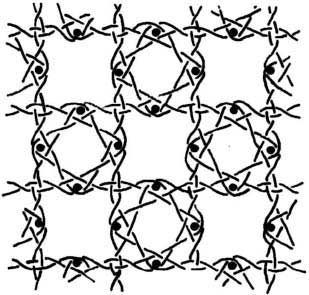 Scale Below is illustrated, in actual size, a strip of eighteenth-century Flemish lace, while on the next page the photograph is enlarged to the same scale as all the enlargements of all the stitches illustrated in the book. This should enable the reader to appreciate the relationship between the two when working the actual stitches.
Scale Below is illustrated, in actual size, a strip of eighteenth-century Flemish lace, while on the next page the photograph is enlarged to the same scale as all the enlargements of all the stitches illustrated in the book. This should enable the reader to appreciate the relationship between the two when working the actual stitches.
The stitches illustrated in this piece of lace are as follows: 1 Half stitch ground 2 Twelve thread armure 3 Haloed spider 4 Toile star 
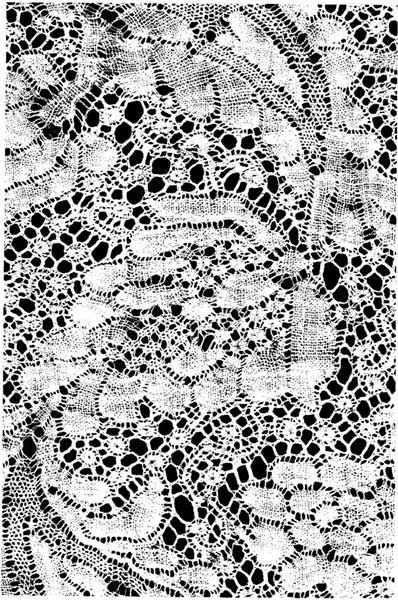 GLOSSARYbraid A 4 thread plait made by continuous half stitches (fig. 1).
GLOSSARYbraid A 4 thread plait made by continuous half stitches (fig. 1). 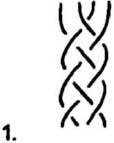 braid x Number of half stitches per braid, e.g. braid x 3 means 3 half stitches, braid x 3 means 3 half stitches plus a cross, so braid ends up untwisted. brick 1 pair weaving back and forth with winkie pins both sides. 2).
braid x Number of half stitches per braid, e.g. braid x 3 means 3 half stitches, braid x 3 means 3 half stitches plus a cross, so braid ends up untwisted. brick 1 pair weaving back and forth with winkie pins both sides. 2). 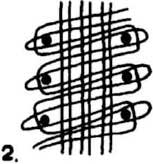 brides Also called legs connecting bars, either twisted or braided.
brides Also called legs connecting bars, either twisted or braided.  brides Also called legs connecting bars, either twisted or braided.
brides Also called legs connecting bars, either twisted or braided.
Literal translation means bridges. bud star Star motif with centre filled diagonally (fig 3). 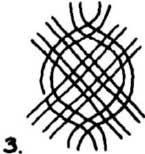 cross Cross left hand thread over right hand thread. diag. Diagonal. fish With joint top and bottom having horizontal bars weaving through (fig.
cross Cross left hand thread over right hand thread. diag. Diagonal. fish With joint top and bottom having horizontal bars weaving through (fig. 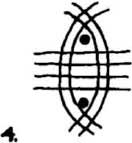 h.s. Half stitch, also called lattice stitch or gauze stitch: 2 over 3; 2 over 1; 4 over 3.
h.s. Half stitch, also called lattice stitch or gauze stitch: 2 over 3; 2 over 1; 4 over 3.  h.s. Half stitch, also called lattice stitch or gauze stitch: 2 over 3; 2 over 1; 4 over 3.
h.s. Half stitch, also called lattice stitch or gauze stitch: 2 over 3; 2 over 1; 4 over 3.
Figures on diagram refer to positions only, not to the bobbins, therefore they must be recounted before each move (fig. 5). 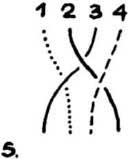 honeycomb stitch
honeycomb stitch
Next page
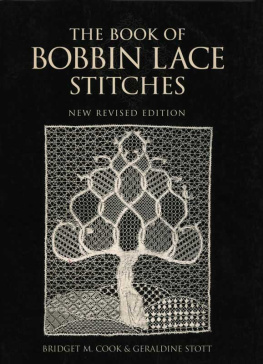
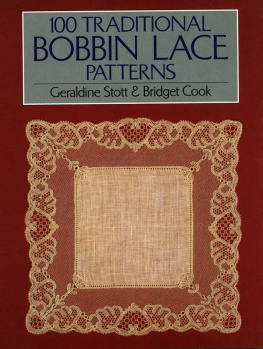
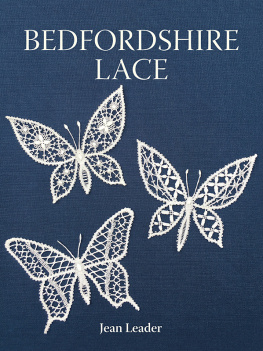
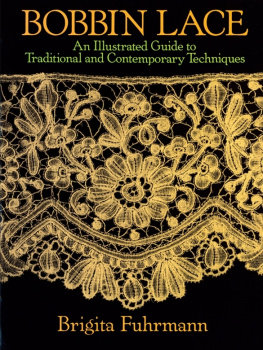


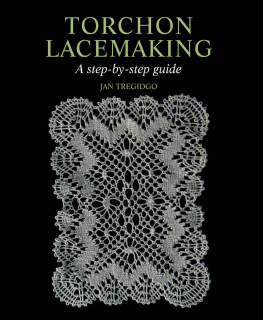

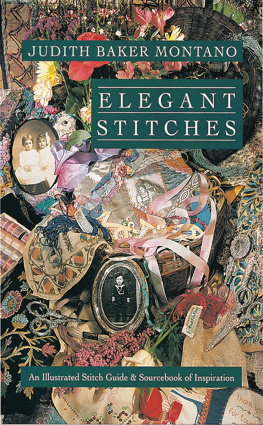
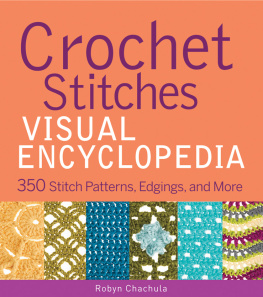
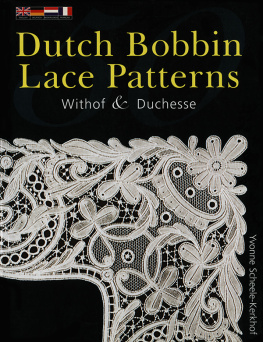
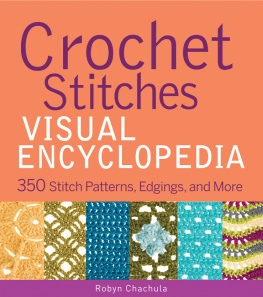

 This book has been designed as a reference text book for the guidance of the growing number of bobbin lace makers across the full ability range. Each page is devoted to just one of the many complex stitches and illustrates the completed stitch together with an enlargement. Then follows a diagrammatic drawing with the appropriate associated illustration followed by a graph of the pricking and the number of bobbins required. The stitches are arranged according to their degree of difficulty with the simpler stitches appearing early on, progressing through to the more complex stitches.
This book has been designed as a reference text book for the guidance of the growing number of bobbin lace makers across the full ability range. Each page is devoted to just one of the many complex stitches and illustrates the completed stitch together with an enlargement. Then follows a diagrammatic drawing with the appropriate associated illustration followed by a graph of the pricking and the number of bobbins required. The stitches are arranged according to their degree of difficulty with the simpler stitches appearing early on, progressing through to the more complex stitches. Scale Below is illustrated, in actual size, a strip of eighteenth-century Flemish lace, while on the next page the photograph is enlarged to the same scale as all the enlargements of all the stitches illustrated in the book. This should enable the reader to appreciate the relationship between the two when working the actual stitches.
Scale Below is illustrated, in actual size, a strip of eighteenth-century Flemish lace, while on the next page the photograph is enlarged to the same scale as all the enlargements of all the stitches illustrated in the book. This should enable the reader to appreciate the relationship between the two when working the actual stitches.
 GLOSSARYbraid A 4 thread plait made by continuous half stitches (fig. 1).
GLOSSARYbraid A 4 thread plait made by continuous half stitches (fig. 1).  braid x Number of half stitches per braid, e.g. braid x 3 means 3 half stitches, braid x 3 means 3 half stitches plus a cross, so braid ends up untwisted. brick 1 pair weaving back and forth with winkie pins both sides. 2).
braid x Number of half stitches per braid, e.g. braid x 3 means 3 half stitches, braid x 3 means 3 half stitches plus a cross, so braid ends up untwisted. brick 1 pair weaving back and forth with winkie pins both sides. 2).  brides Also called legs connecting bars, either twisted or braided.
brides Also called legs connecting bars, either twisted or braided.  cross Cross left hand thread over right hand thread. diag. Diagonal. fish With joint top and bottom having horizontal bars weaving through (fig.
cross Cross left hand thread over right hand thread. diag. Diagonal. fish With joint top and bottom having horizontal bars weaving through (fig.  h.s. Half stitch, also called lattice stitch or gauze stitch: 2 over 3; 2 over 1; 4 over 3.
h.s. Half stitch, also called lattice stitch or gauze stitch: 2 over 3; 2 over 1; 4 over 3.  honeycomb stitch
honeycomb stitch